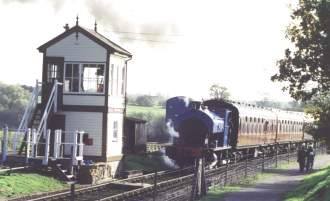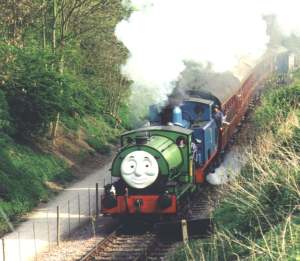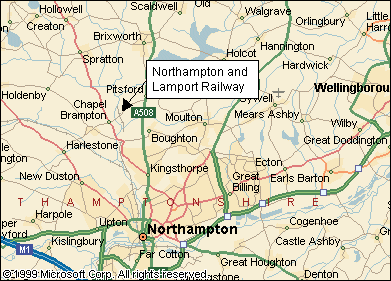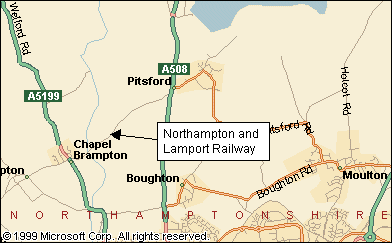Our present motive power roster includes a number of working steam and classic diesel locomotives,
some of which carry the 2E shed plate in honour of Northampton's steam depot which closed in the 1960's. Further locomotives can
be seen in various stages of restoration. Our restored coaches provide a comfortable seat from which to view the Northamptonshire countryside.
HISTORY ON YOUR DOORSTEP
The Northampton to Market Harborough branch was designed by George R Stephenson and George Bidder
and was opened in 1859. It had six stations and two tunnels (Kelmarsh 322yards and Oxendon 462 yards) along its 15 mile length. The branch carried
goods and passengers throughout most of its commercial life, but had an erratic period in the 1960's and 1970's when passenger traffic was stopped and started a
number of times. On 16th of August 1981 the line was finally closed by British Railways.
THE PERFECT DAY OUT
The railway offers a good value day out for all generations.
Full facilities are provided including:
Car parking facilities for all visitors.
The Platform 3 Buffet Car (Located in a restored main line buffet coach).
Souvenir shop with a wide range of railway souvenirs, books videos and toys.
Ice creams, hot & cold drinks and light snacks are normally available.
The Brampton Valley Way linear park provided by Northamptonshire County Council also runs along most of the Northampton to Market Harborough trackbed.
A NEW ERA
The end of one era saw the beginning of a new one. Only weeks after the closure of the line, a group was formed with a view to re-open
the line between Market Harborough and Northampton. Three years later the Society started to re-build the railway in the old goods yard at Pitsford & Brampton Station.
After years of hard work and fund raising, the first passengers were carried along the re-opened section in November 1995. The line was officially re-opened on 31st march 1996,
and has been growing in popularity with the passing of every year. At present the line is just under a mile long, but work is in progress on the restoration of a bridge, the
completion of which will allow the line to be extended.
|




